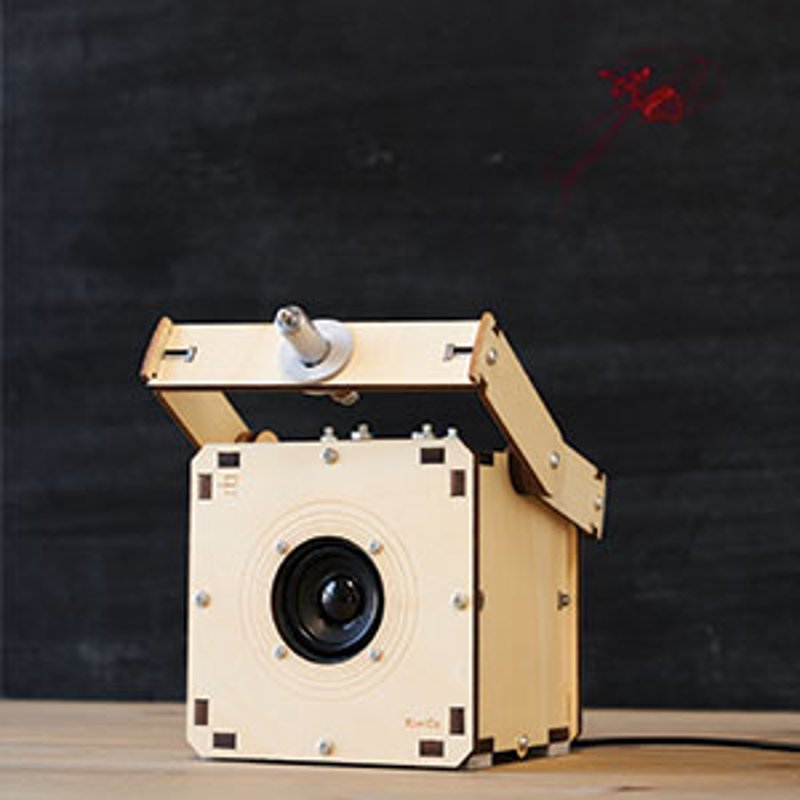Laser Speaker
In this crate, you'll explore the science, engineering, and history behind music visualizers while building one of your own!

Explore:
- Sound Vibrations
- Visualizing Music
- Lasers & Diffraction
FROM YOUR CRATE
After building your laser speaker, use these test sounds for the Audiovisual Experiments.
TEST SOUND 1: Volume
TEST SOUND 2: Pitch
TEST SOUND 3: Timbre
TEST SOUND 4: Harmony
Behind the design
Peek into the KiwiCo product design studio and the design process behind the Eureka Crate Laser Speaker.
- Since the laser speaker’s vibrations had to both sound good and look good with the laser, we spent most of our design time prototyping different kinds of speaker boxes. This early prototype was one of our first designs that could actually make the laser membrane vibrate by playing music. We decided the speaker had to look more like a speaker, though, and less like an old telephone.
Call Me Maybe?
- Next, we tried out designs used in real loudspeakers. This prototype was based on a transmission line speaker, which uses a winding path inside the box to amplify low-frequency sounds. The stronger low sounds would’ve vibrated the laser more, but we couldn’t get the complex folds quite right to boost them. We decided that a simpler design would be better, and we kept working.
Long and Winding Road
- Our final prototypes all had a single speaker box chamber with a single hole for the laser membrane — but we weren’t sure where the best spot for that was, so we had to try out different locations. This honeycomb speaker had the laser on the back, which worked fine but ended up hiding the laser too much. The final design features the laser on top so you can really see it in action!
Dynamite with a Laser Beam
